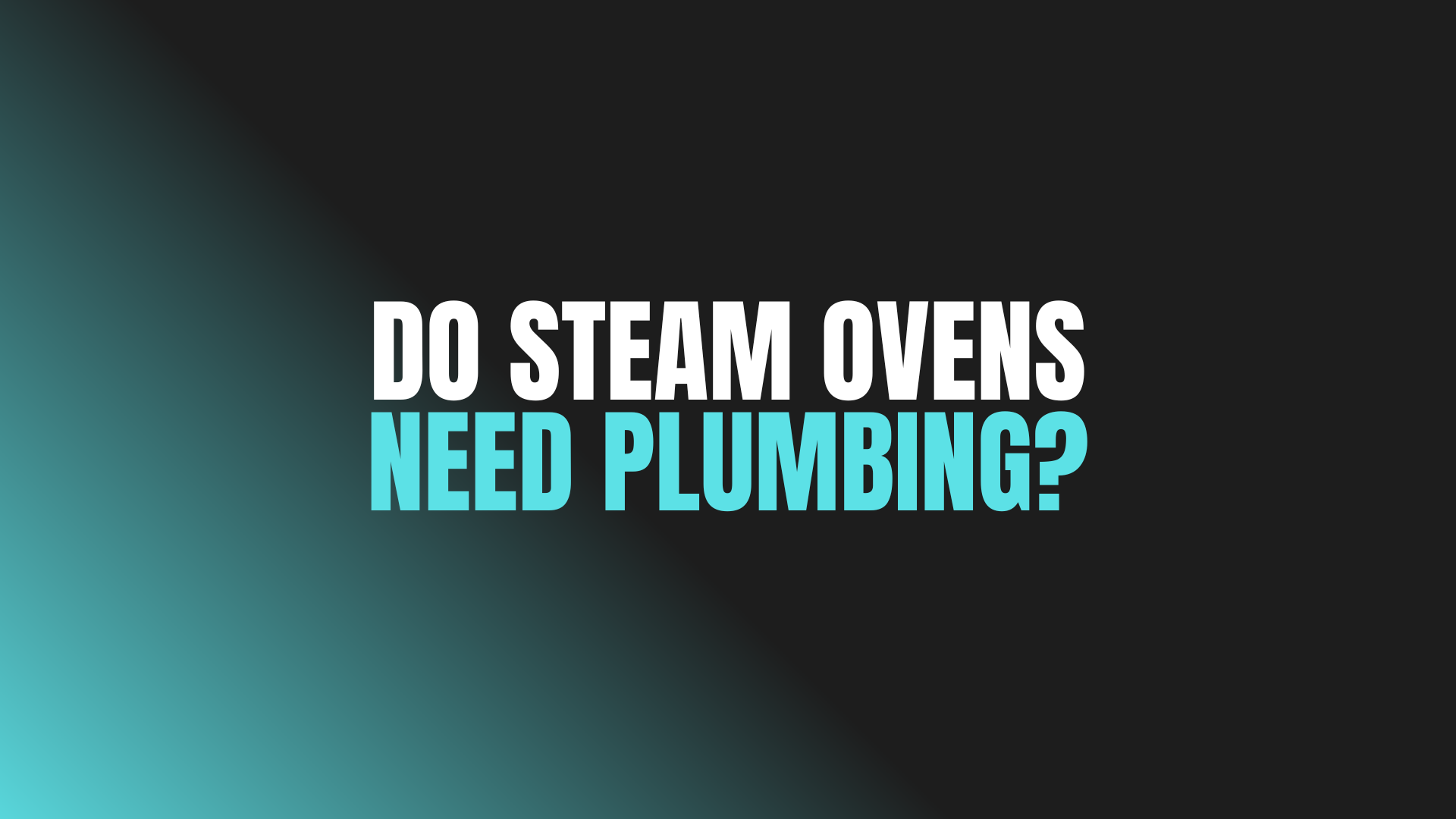
Question: Do Steam Ovens Need Plumbing?
Answer: Whether or not steam ovens need plumbing depends on the model. Some steam ovens are plumbed directly to a water line. Others have built-in reservoirs that you fill manually.
Understanding Steam Oven Water Sources
Steam ovens, known for their healthy and flavourful cooking, often raise the question: Do steam ovens need plumbing? The answer depends on the type of steam oven you choose. This article clarifies the two main types of steam ovens – plumbed and non-plumbed – and explains how their water supply affects installation and usage. Understanding the distinction between these types will help you select the best steam oven for your kitchen and lifestyle. We will explore the advantages and disadvantages of each type, helping you make an informed decision for your culinary needs.
This article aims to provide clear and concise information about steam oven water sources. We will examine the installation processes for both plumbed and non-plumbed models, highlight their different maintenance requirements, and discuss the impact of each on your kitchen workflow. By the end of this article, you should have a comprehensive understanding of how steam ovens work and be equipped to choose the perfect oven for your home.
Plumbed Steam Ovens: Direct Water Access
Plumbed steam ovens connect directly to your home’s water supply. This direct connection provides a constant flow of water to the oven, eliminating the need for manual refills. Installation requires a professional plumber to connect the oven to a water line. This type of oven offers continuous steam generation, ideal for extended cooking times and larger quantities of food.
A key benefit of plumbed steam ovens lies in their uninterrupted operation. You can cook for extended periods without concern for water levels. This feature simplifies the cooking process, allowing you to focus on the food, not the oven’s water supply. Plumbed models also often include advanced features like automatic descaling, simplifying maintenance.
Click the link to learn more about Blue Kitchen Refacing
Related Article: Can You Cook Everything in a Steam Oven?
Related Article: Are Steam Ovens Worth Buying?
Comparing Plumbed and Non-Plumbed Options
Choosing between a plumbed and non-plumbed steam oven involves considering several factors. Plumbed models offer continuous operation and often include advanced features. Non-plumbed models provide installation flexibility and a lower initial cost.
Your cooking habits also play a crucial role in the decision-making process. Frequent steam cooking and large meal preparations benefit from a plumbed oven’s continuous steam. Occasional steaming or smaller portions may favour the convenience and affordability of a non-plumbed model. Ultimately, the best choice depends on your individual needs and kitchen setup.
Installation Considerations for Steam Ovens
Installation requirements differ significantly between plumbed and non-plumbed steam ovens. Plumbed models require professional installation, including connecting the oven to a water line and ensuring proper drainage. This process may involve some modifications to your existing plumbing.
Non-plumbed steam ovens offer easier installation. They require only a standard electrical outlet and no plumbing modifications. You simply place the oven in your desired location and fill the water tank before use. This simplified installation makes them an attractive option for renters or those seeking a quick and easy setup.
Maintenance and Upkeep of Your Steam Oven
Both plumbed and non-plumbed steam ovens require regular maintenance to ensure optimal performance. Plumbed models often feature automatic descaling systems, simplifying the cleaning process. Regularly cleaning the interior cavity remains important for both types to prevent mineral buildup and maintain hygiene.
Non-plumbed models require manual refilling of the water tank and periodic cleaning of the tank itself. Wiping down the interior cavity after each use helps prevent stains and buildup. While non-plumbed models may require more hands-on maintenance, the tasks remain straightforward and easy to manage.
Conclusion: Choosing the Right Steam Oven for Your Kitchen
Do steam ovens need plumbing? Not all of them. Non-plumbed models offer a convenient alternative for those without direct water access or who prefer a simpler setup. Plumbed steam ovens offer a constant water supply, eliminating the need for manual refills, ideal for frequent or extensive steam cooking. Carefully consider your cooking habits, budget, and kitchen layout to determine the best option.
This understanding of the differences between plumbed and non-plumbed steam ovens empowers you to choose the best fit for your kitchen. Evaluating your individual cooking needs and installation capabilities will guide you to the ideal steam oven, ensuring a seamless and enjoyable cooking experience. Whether you opt for the continuous power of a plumbed model or the convenience of a non-plumbed option, a steam oven can elevate your cooking to a new level of flavour and health.

Blue Malue Get in touch with Blue here.
